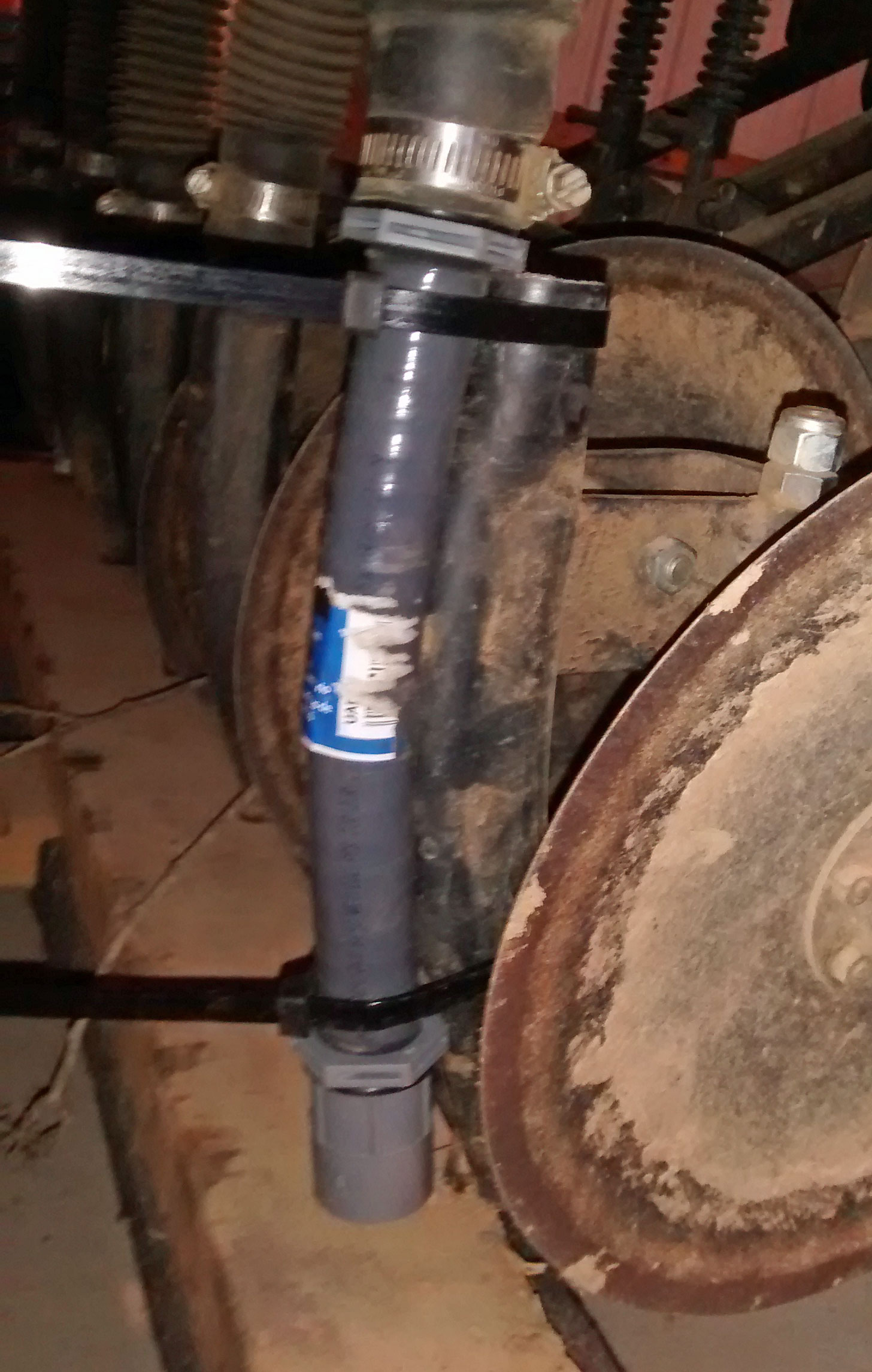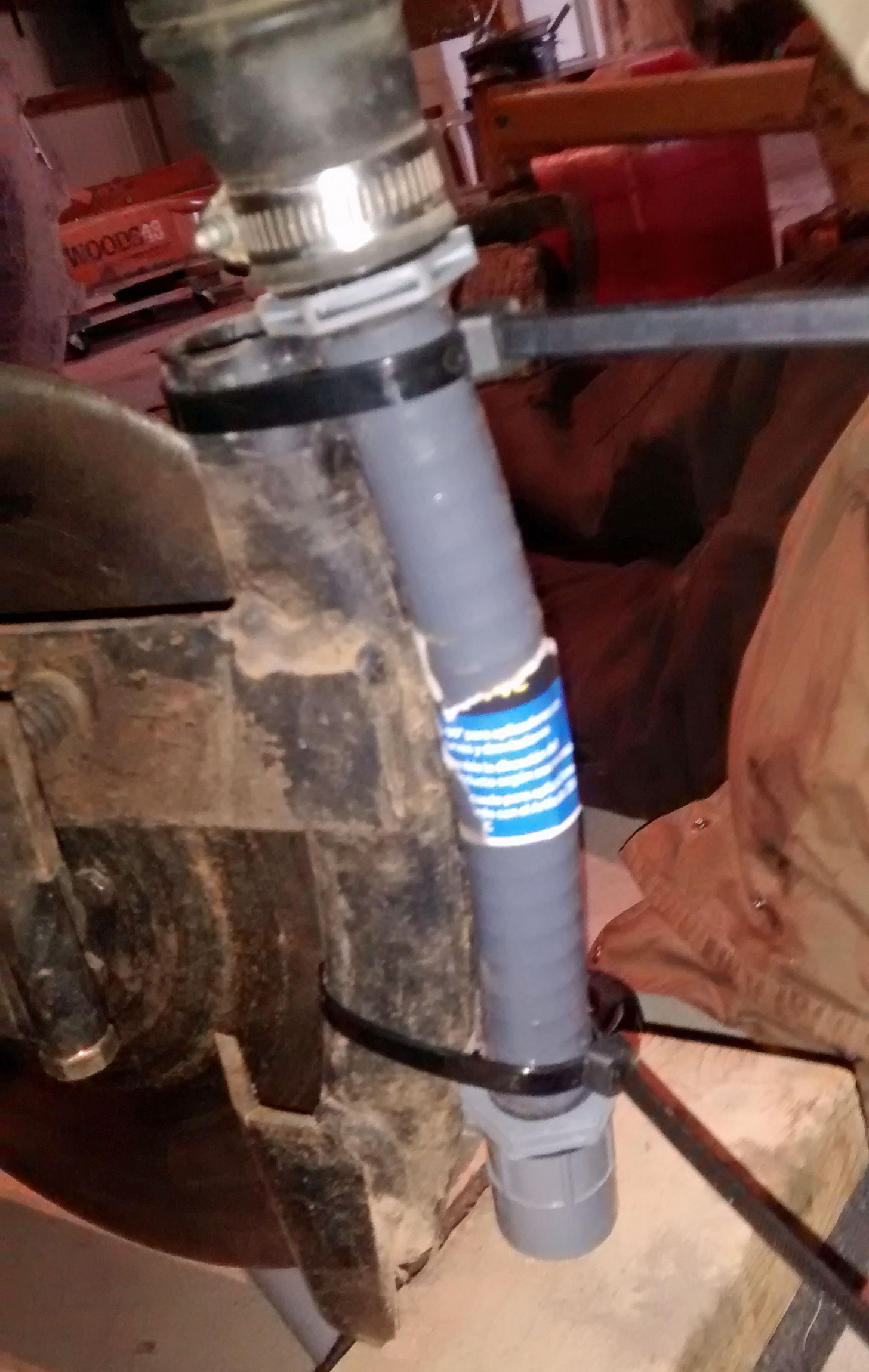yoderjac
5 year old buck +
I tried out my Kasco no-till versadrill for the first time. My first attempt was on an old road way. I had used my loader to reclaim top soil and spread it on the logging road. This road had been plowed and tilled a couple years ago, but the soil was so poor it yielded little. I did not plow or till the road, but I did run the sub-soiler through it.
On my first trip along the road, I went over a small stump about the size of your fist. It caught one of the cutting wheels just right and put torque on it. The pivot arm snapped at the connection. The walking beam and wheels were unharmed. I simply picked up the walking beam and put it in the loader, tied off the seed tube from that center row, and used it as a 4 row instead of 5 row drill.
I planted a mix of sunflowers and buckwheat with it. It seemed to work pretty well. One problem I had was the cultipacker. If I set the drill for the proper seed depth, when I lifted it with the 3-point hitch, the cultipacker still touched the ground. This causes several issues. First, during transport, it will distribute seed. Second, when lifting the unit and turning the tractor, the cultipacker would get lateral pressure.
After a while, the lateral pressure caused one of the U-bolts that hold the cultipacker in place to break and the cultipacker to slide. This caused the drive chain to slip off. After putting the culitpacker back in place and replacing the U-bolts, I was off and running again.
The seed looks planted well, but I'm not sure how well the cultipacker did in covering it in this un-tilled soil. However when I checked on it the next morning, it was all covered OK.
Next I tried it on some fields I had already plowed and tilled. I first ran a lawn roller over these fields to firm them up. Even after this, it was hard to plant the seed shallow enough. I was planting soybeans, cowpeas, and sunflowers in this mix so I think they can stand to be planted deeper than some seeds. In this soil, the cultipacker worked very well to cover the seeds. I used millet in the mix for some of these fields. I was concerned that it would be planted too deep, so I broadcast it by hand ahead of drilling the larger seed. My hope was that the cultipacker would press it in to the ground.
It takes some fooling around with seeding rates, and time will tell how well it worked, but I think I'm going to like it in the long run. I have about 1/2 my fields planted so far.
Thanks,
Jack
I'm curious to see how your plots are doing. I am considering buying a kasco versa drill myself.
I got better germination rates than ever before by far! Now, let me qualify that a bit. First, I think my timing was better this year than ever before. I owe some of this to the drill in that it is much faster. I always had to start my planting as early as possible to ensure stuff was in ahead of the rain. I can only get to my property on weekends, so wet conditions could easily keep me from planting for 3 weeks or more depending on when the rain occurs relative to the weekend. So, I always planted early to be on the safe side. There were two problems with that. 1) Germination rates are lower when the soil temperature is sub-optimal. 2) My warm season plots were germinating and growing on the front end of the spring green-up curve. That made them more attractive to deer relative to native plants. So, they got hit hard soon after germination.
This year I waited until soil temperature was correct since I knew I could plant all my plots in very short order using the drill.
Next, mother nature was very good in my area this spring. It rained off and on for a full week right after I planted and we have had ample rain since then.
I will say that getting the proper planting depth is more of an art than a science. I planted mixes. With small seeds like millet, I broadcast them with a hand broadcast spreader then drilled over top of them letting the units cultipacker simply press them into the ground. I tried to keep the seed sizes in the mix relatively close in size. I tried to set the depth for the smaller of the seeds in the mix. This worked pretty well.
I did have some problems with the drill. Remember, I bought it used for 3K. First, I hit a small stump and busted a pivot arm on the center row, so I simply put a piece of duct tape over that port and tied the seed tube off and planted with 4 rows instead of 5. Next, one of the seed tubes was clogged and I didn't notice it. So, I was actually planting 3 rows instead of 5.
I kept a constant tractor speed and played with the opening size and gear setting for each mix. Because of the missing and clogged rows, I'll still need to fool around with this next year.
I have not yet tried to use it in a true no-till situation where I was cutting through trash so I can't really speak to that.
All in all, I'm very happy with the results so far (INTERNAL IMAGE LIKE EMOTICON REMOVED)
This picture was taken on 5/21:

It wasn't taken for the purpose of showing the field, but it gives you a general idea. The far side is a perennial clover plot, but the near side was planted on 4/28 so it is about 1 month old. You are looking across the rows. It has a mix of I&C Cowpeas, Soybeans, Sunflowers, and Buckwheat in it.
Thanks,
Jack
Hi Jack,
Not to hijack this thread, but i would be interested in your experience with the buckeye cam. feel free to send me a PM if it is easier.
thanks
Charlie,
I'll just start a thread on the QDMA Trail Camera forum. That way, others can benefit from the information unless there is something you think requires a PM. Here is the thread: <http://www.qdmaforums.com/showthread.php?t=24416
Thanks,
Jack
Jack,
If you had it to do over again would you still buy the Kasco and if so would you get anything added to it, and would you buy it new or would you get a used one again.
If I had an unlimited budget, I'd probably have gotten a brand new great plains or tye. Even a new Kasco was over my budget. I paid 3K for the unit (used but very lightly) and I'm already convinced it was a steal.
I called Kasco and asked about adding options. Most of them can be added in the field if you can do a little welding according to them. I thought I would need an agitator for planting mixes, but I just stopped every now and then and checked the box. As long as the seeds are in the same ball park size wise, there is no issue.
I also originally thought I would really want a legume box. I think on a higher end drill I would. But on the Kasco, there is no real way to adjust the depth for the second box (at least that I could figure out). Instead, I've simply been broadcasting my small seed like clover, millet, or turnips and then drilling through it letting the compactor on the rear press the small seed into the soil. Perhaps this would be an issue with trash in the field, but I haven't tried that yet. The other way I think you could do it if you did have a legume box is to simply let the tubes hang loose. This would drop the seeds on top of the soil in front of the cultipacker. I'm not sure how you would adjust the rate with the second box. There are 3 factors that control rate, the opening size on the box, the tractor speed, and the gear setting. I know the legume box would have it's own metering system, but I don't know if it would have it's own gear box. If so, it may be worth it.
I would have preferred a 6' model over a 4' model because my tractor is about 6' wide, but other than that, I'm pretty happy with it.
When I consider the fuel costs associated with plowing and tilling as well as the time plus the fact that the seeding rates for drilling are lower, it won't take too many years to pay for itself.
Thanks,
Jack
Last edited:



